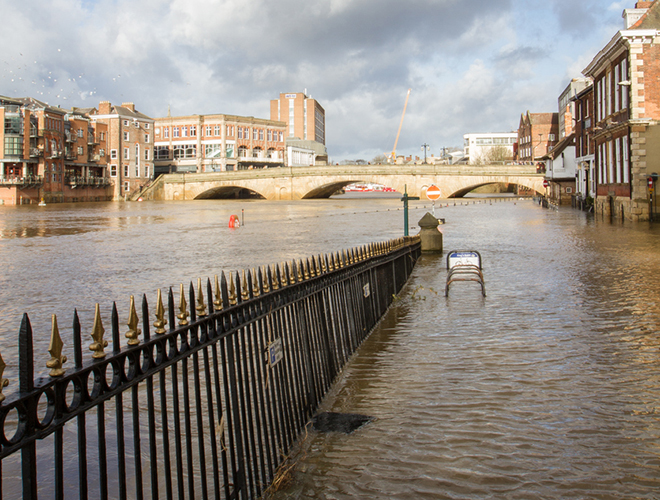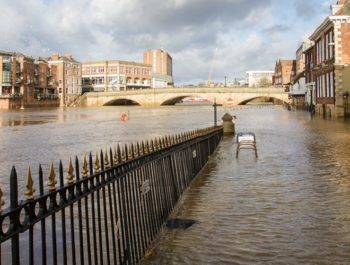Flood risk is rising and so must our resilience to it


The severe flooding over the last two weeks in parts of Wales and England which destroyed homes, businesses and livelihoods provides further evidence that flood risk is rising, but not along with our ability to mitigate it. And in West Yorkshire, the failed attempt to install temporary barriers in place of a £30m flood defence under construction subjected the town of Mytholmroyd[1] to a severe deluge, making it clear that a wider flood resilience strategy is urgently needed.
Any effort to keep flood risk levels at bay is jeopardized by continued risk creation. The way we use land for example, and how and where we develop property are actually exacerbating the risk of flooding from climate change in many parts of the UK, making it harder for communities, companies and government to reduce losses from flooding events and secure sustainable economic growth. Ongoing research by the Grantham Research Institute shows that of the 120,000 new homes built in high-risk flood zones in England and Wales over the last decade (including surface water flooding and flooding from river and sea), a disproportionally higher number are found in deprived and struggling neighbourhoods, with the possibility of many more additional new homes ending up in high-risk flood zones over their lifetime as a result of climate change.
While flood resilient design could ensure the long-term sustainability of these homes, there is very little evidence that developers, planners and financiers are taking into account climate change when deciding how and where to build. The insurance industry is very well informed of the current and future levels of flood risk. As society’s risk manager, the sector can help make the country more flood resilient – but has missed many opportunities to do so, in the UK and elsewhere[2].
The design of Flood Re is illustrative of these weaknesses. Flood Re is a joint initiative between the Government and insurers that helps make flood risk insurance more affordable. The problem is that it is not designed to support the necessary increase in resilience for current and future flood risks. Any future reform of Flood Re should set out a clear strategy to introduce incentives for resilience measures via insurance, and avoid removing them by, for example, extending subsidised insurance to homes built after 2009[3] . While this would be good news for those living in around 80,000 or so new homes built in high-risk flood zones, it could also signal to property developers that they can continue to build in flood zones because subsidised insurance will be available to cover the inevitable damage. Ultimately, addressing the risks of flooding now and in the future and building resilience against them is the only way to help ensure the affordability and availability of insurance.
Building resilience to flooding doesn’t just mean investments in infrastructure though. It means improving education, raising awareness, better community planning, and putting in place natural solutions. In other words, flood resilience needs to be mainstreamed into broader risk management planning to account for instances where several shocks might occur simultaneously or shortly after one another.
With the warming we are already committed to over the next few decades, a further overall 11-16cm of sea level rise is likely by 2030, relative to the 1980s to 2000s, of which at least two-thirds will be due to the effects of climate change. The UK is set to see about a 10 per cent rise in annual average rainfall by 2100. Flooding is here to stay and a comprehensive forward looking cross-sectoral resilience strategy is needed to ensure the long-term sustainable development of communities across the country.

